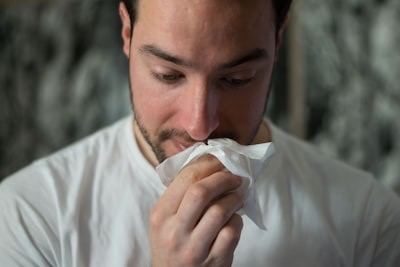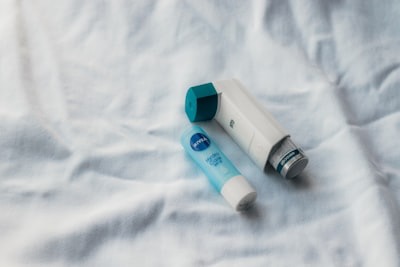Essential Guide to Spring Illnesses

Key Highlights
Key Highlights:
- Overview of common spring illnesses
- Tips for preventing spring allergies
- Recognizing and treating seasonal flu
- Importance of staying hydrated during spring
- Strategies for boosting immunity in the spring season
Introduction

As the flowers bloom and the weather warms, spring brings with it not only sunshine and blossoms but also a resurgence of various seasonal illnesses. Understanding these spring ailments is crucial for staying healthy during this time of year. From pesky allergies to potentially serious conditions like Lyme disease and the spring flu, being aware of the symptoms and causes can help you take the necessary precautions. Let’s delve into the essential guide to navigating through the maze of spring illnesses and when to seek advice from your doctor or emergency medical facility.
Understanding Spring Illnesses: Overview and Causes
Spring illnesses in springtime are often triggered by various factors such as seasonal allergies, warmer weather, and the increased presence of allergens like pollen. Understanding the causes involves recognizing how the immune system reacts to these triggers, leading to symptoms like runny nose, watery eyes, and respiratory issues. Allergies can exacerbate conditions like asthma, while viruses like the common cold and rhinovirus thrive in the changing weather conditions, emphasizing the importance of preventative measures.
Why Spring Triggers Certain Illnesses
During spring, various factors converge to trigger illnesses. The increase in pollen and allergens can aggravate seasonal allergies, also known as hay fever, leading to symptoms like runny nose and watery eyes. Additionally, the warmer weather encourages outdoor activities, exposing individuals to insect allergies and tick-borne diseases like Lyme disease. The fluctuating temperatures can weaken the immune system, making individuals more susceptible to illnesses like the common cold and flu during this season. Understanding these triggers is crucial for effectively managing springtime ailments.
The Role of Allergens in Spring Illnesses
Spring illnesses in springtime are often exacerbated by allergens like pollen, mold, and dust. These triggers can prompt allergic reactions, causing symptoms such as sneezing, watery eyes, and congestion in susceptible individuals. Allergens can also worsen conditions like asthma, leading to respiratory distress. Understanding the impact of these microscopic particles is crucial in managing spring-related health issues and seeking appropriate medical care when needed, such as visiting an urgent care center like Urgentology Care. The presence of allergens highlights the importance of preventive measures to minimize exposure and mitigate the risk of developing spring allergies.
Common Symptoms of Spring Illnesses
Runny nose, watery eyes, and sneezing are common symptoms of spring illnesses like seasonal allergies. Patients may experience coughing, congestion, and itchy throat due to increased pollen levels and mucus production. For some, symptoms worsen to include asthma attacks triggered by allergens. Flu-like symptoms such as fever and body aches could indicate a more severe infection. Recognizing these signs early on can help in timely management and treatment to prevent complications.
Identifying Allergy Symptoms
Runny nose, watery eyes, and itching are common allergy symptoms. Sneezing, congestion, and coughing could also indicate allergies. If symptoms worsen outdoors or around pets, it might be seasonal allergies. Allergy symptoms typically affect the respiratory system and eyes. If experiencing these, consulting an allergist can help pinpoint triggers.
Distinguishing Between Cold, Flu, and Allergy Symptoms
Determining whether you have a cold, the flu, or seasonal allergies can be challenging due to overlapping symptoms such as coughing, congestion, and fatigue. However, key distinctions exist. Allergies typically involve sneezing, itchy eyes, and a clear runny nose. In contrast, colds often feature a sore throat and thick, discolored mucus, while the flu presents with high fever and body aches. Tracking symptom duration and onset can help differentiate these conditions accurately.
Detailed Look at Specific Spring Illnesses
Asthma and Its Springtime Triggers
Rhinovirus: More Than Just a Common Cold
Battling the Spring Flu: Symptoms and Prevention
Lyme Disease: A Tick-Borne Menace
Gastroenteritis: Contending with the Stomach Flu
Strep Throat in the Spring: Causes and Symptoms
Allergic Conjunctivitis: Fighting Off Pink Eye
Insect Allergies: Bees, Wasps, and More
Asthma and Its Springtime Triggers

Asthma tends to worsen during spring due to increased pollen levels and mold spores in the air, common triggers for asthma patients. The warmer weather encourages more outdoor activities, exposing individuals to these allergens, as well as other triggers such as dust, cleaning chemicals, and insect repellents. Additionally, the use of fertilizers during this time can also contribute to asthma symptoms. Pollen allergies can lead to respiratory symptoms, aggravating asthma. It’s crucial for asthma patients to be vigilant during springtime, as the heightened presence of allergens and fertilizers can cause asthma exacerbations. Understanding these triggers can help individuals better manage their asthma during the spring season.
Rhinovirus: More Than Just a Common Cold
Rhinovirus, often mistaken for a common cold, can be more than meets the eye during springtime. This virus, causing respiratory symptoms like coughing and congestion, thrives in the spring season. Its impact can go beyond inconvenience, affecting sinuses and leading to prolonged discomfort. Given its similarity to common cold symptoms, distinguishing between the two is crucial for appropriate treatment. Understanding the nuances of rhinovirus can help in timely intervention and proper management to alleviate its effects. Be vigilant in differentiating and addressing this springtime nuisance promptly.
Battling the Spring Flu: Symptoms and Prevention

Spring flu during springtime can hit unexpectedly, mimicking a common cold with symptoms like coughing, congestion, and fatigue. Preventive measures include regular hand-washing, avoiding close contact with sick individuals, and getting the flu vaccine. Staying hydrated and getting ample rest can aid recovery.Consult a healthcare provider if symptoms worsen or persist.
Lyme Disease: A Tick-Borne Menace
Lyme disease, transmitted through tick bites, is a serious concern in spring. This bacterial infection, caused by the Borrelia burgdorferi bacterium, can lead to various symptoms if left untreated. Early signs include a distinctive bull’s-eye rash, fatigue, fever, and joint pain. If you suspect Lyme disease, prompt medical attention is crucial to prevent severe complications. Remember to wear protective clothing, use tick repellent, and perform thorough tick checks after outdoor activities to reduce the risk of contracting this potentially debilitating illness.
Gastroenteritis: Contending with the Stomach Flu
Gastroenteritis, commonly known as the stomach flu, brings discomfort through symptoms like vomiting, diarrhea, nausea, stomach pain, and cramping. While usually not serious, it can be unpleasant. Staying hydrated is crucial, and gradual reintroduction of bland foods is recommended. If symptoms persist or worsen, seeking medical advice is advisable. Preventive measures include regular handwashing, disinfecting surfaces, and avoiding contaminated food or water.
Strep Throat in the Spring: Causes and Symptoms
Strep throat in the spring can be attributed to the increased interaction among individuals as outdoor activities rise with the warmer weather. The streptococcus bacteria, commonly present in the throat, can lead to infection during this season. Symptoms include a sore throat, difficulty swallowing, swollen tonsils, fever, and in some cases, white patches on the tonsils. If you experience these symptoms, consulting your primary care physician is advisable to determine the appropriate course of action.
Allergic Conjunctivitis: Fighting Off Pink Eye
Spring brings not only blooms but also allergens that can trigger allergic conjunctivitis, commonly known as pink eye. This condition causes redness, itching, and watery eyes. To combat pink eye during the vibrant spring season, avoid touching your eyes, wash your hands frequently, and refrain from sharing towels or pillows. If symptoms persist, consult an allergist for tailored treatment to alleviate discomfort and prevent further irritation from indoor triggers like pet dander and dust mites. Be proactive in fighting off pink eye to fully enjoy the wonders of spring.
Insect Allergies: Bees, Wasps, and More
Insect allergies, encompassing reactions to bees, wasps, and other creatures, pose serious risks during spring’s outdoor activities. Stings can trigger anaphylaxis, requiring immediate medical attention at the nearest emergency room. Symptoms range from minor swelling and itching to life-threatening anaphylaxis. Individuals with known insect allergies should carry prescribed epinephrine auto-injectors for prompt treatment. To prevent stings, use insect repellents and avoid provoking these tiny creatures. If stung, promptly seek medical care if experiencing severe symptoms like vomiting, breathing difficulties, or widespread hives in any part of the body.
Prevention and Management Strategies
One of the key strategies for combating spring illnesses is to avoid allergens by keeping windows closed, using air purifiers, and wearing masks outdoors. Regularly cleaning your living space and washing your hands frequently are some of the most effective ways to prevent the spread of illnesses. If symptoms persist, seeking medical advice promptly is crucial. Differentiating between allergy symptoms and other illnesses is essential for proper treatment. Maintaining overall health through a balanced diet, regular exercise, and adequate rest can strengthen your immune system against spring ailments.
Practical Tips for Avoiding Spring Allergens
During spring, to minimize exposure to allergens, keep windows closed, especially in the morning when pollen levels are high. After outdoor activities, change clothes and shower to remove pollen. Use air conditioning with HEPA filters to improve indoor air quality. Regularly clean and dust your home to reduce allergen buildup. Choose outdoor activities after rain when pollen levels are lower. Consider wearing a mask while doing yard work. These simple steps, along with taking allergy medications before symptoms start, can significantly decrease your exposure to spring allergens.
When to Seek Medical Advice
If you experience severe symptoms like difficulty breathing, chest pain, or high fever, seek immediate medical attention. Persistent symptoms that worsen or don’t improve with over-the-counter medications warrant a doctor visit. For individuals with chronic conditions like asthma or allergies, it is important to have an emergency protocol in place in case prescribed medications do not relieve the inability to breathe. It’s essential to reach out to a primary care physician or allergist when symptoms become unmanageable or concerning. Timely medical advice can prevent complications and ensure proper treatment.
Home Remedies vs. Professional Treatments
Home remedies vs. professional treatments: When combating spring illnesses, evaluating if home remedies suffice or professional intervention is necessary is crucial. While milder symptoms like runny nose or sore throat might respond well to home care such as rest and hydration, conditions like lyme disease or severe allergies demand medical attention. Consulting a healthcare provider ensures accurate diagnosis and tailored treatment plans, while over-the-counter remedies might alleviate minor discomfort but fall short in managing more serious ailments. Proper assessment can guide the choice between self-care and professional healthcare interventions.
Conclusion
In conclusion, spring illnesses encompass a range of conditions from seasonal allergies to infections like the flu and Lyme disease. Understanding the triggers and symptoms is crucial for timely intervention. Managing these illnesses involves prevention through avoiding allergens, seeking medical help when needed, and knowing the difference between minor ailments and serious conditions. By staying informed, prepared, and proactive, you can navigate through springtime health challenges with confidence and ensure a healthier season for yourself and your loved ones.
FAQ
How Can I Tell If It’s an Allergy or a Cold?
To differentiate between an allergy and a cold, observe symptoms like sneezing and itchy eyes for allergies, and fever and body aches for a cold. Allergies lack fever but have clear mucus, while colds may bring yellowish mucus. Seek medical advice for accurate diagnosis.
Are Spring Illnesses More Severe for Children or the Elderly?
Spring illnesses can affect both children and the elderly differently. Children may experience more severe symptoms due to developing immune systems, while the elderly may face complications from underlying health conditions. Understanding these differences helps in providing appropriate care.
Is It Too Late to Get a Flu Shot in Spring?
It’s not too late to get a flu shot in spring. Getting vaccinated can still provide protection as the flu season can last into late spring. Protect yourself and others by getting vaccinated even in the spring months.
Can Spring Illnesses Affect My Mental Health?
Spring illnesses can indeed affect mental health. The stress and discomfort of dealing with allergies or infections during spring can impact mood and well-being. Seeking support and managing symptoms effectively are key in maintaining mental health during this season.
How Do I Prepare for Spring If I Have Asthma?
To prepare for spring with asthma, consider avoiding outdoor activities during peak pollen times, keeping windows closed, using air purifiers, and taking prescribed medications regularly. Consult your healthcare provider for an asthma action plan tailored to the season’s challenges.
What Are the Best Ways to Reduce Exposure to Spring Allergens?
To reduce exposure to spring allergens, try keeping windows closed, using air purifiers, wearing a mask when doing outdoor activities, showering after being outside, and washing clothes frequently.
https://www.youtube.com/channel/UCVmEmqlbsx4hZr4FOcU2QMQ
https://www.clockwisemd.com/hospitals/2383/visits/new
https://www.lung.org/about-us/blog/2016/04/dont-fear-spring-allergies.html
https://www.valleyhealthsystemlv.com/patients-visitors/health-records-online